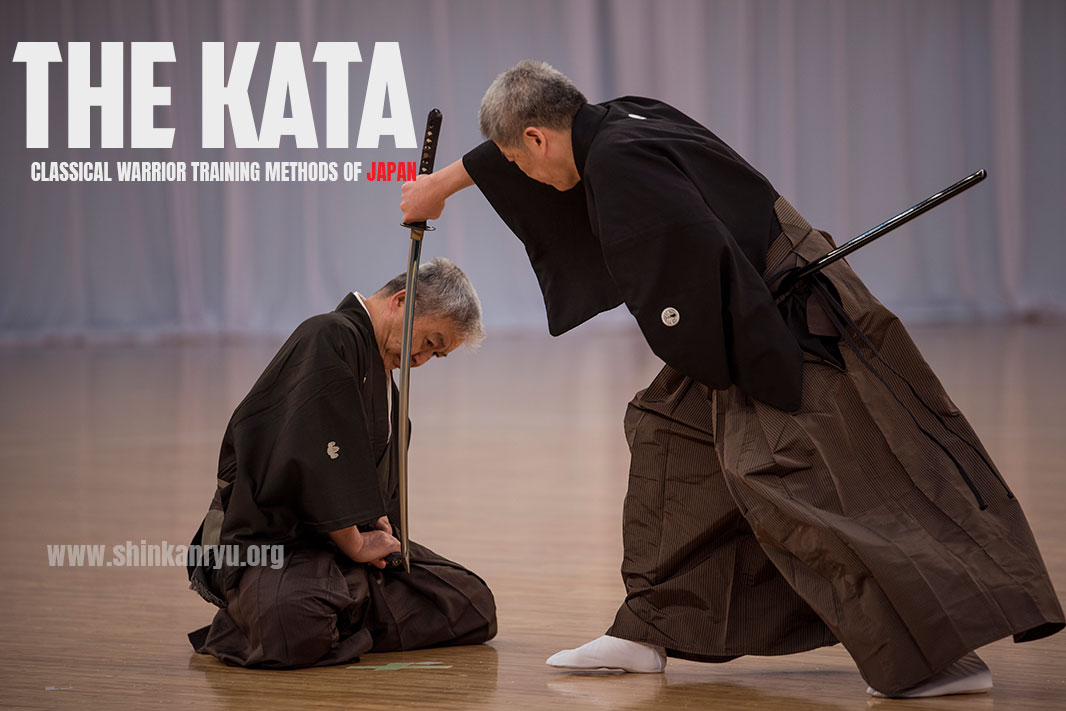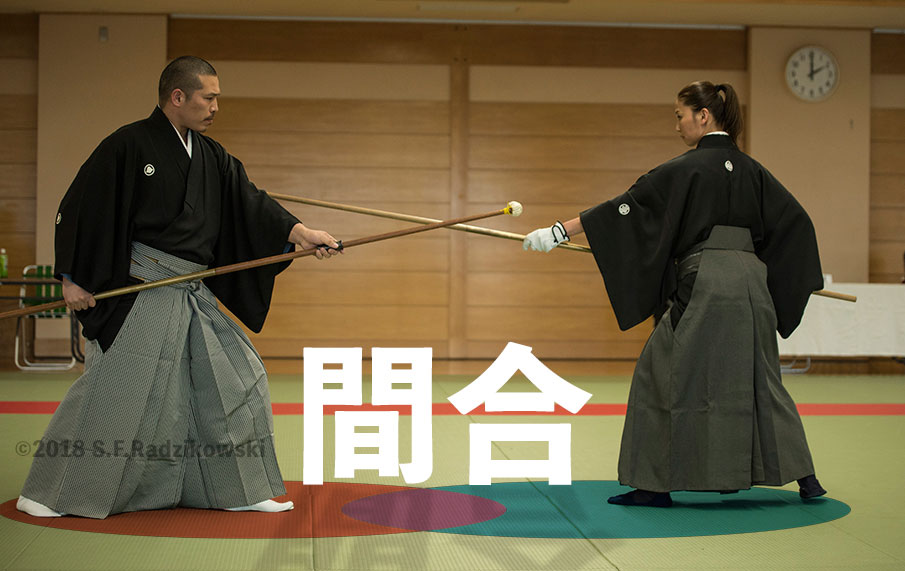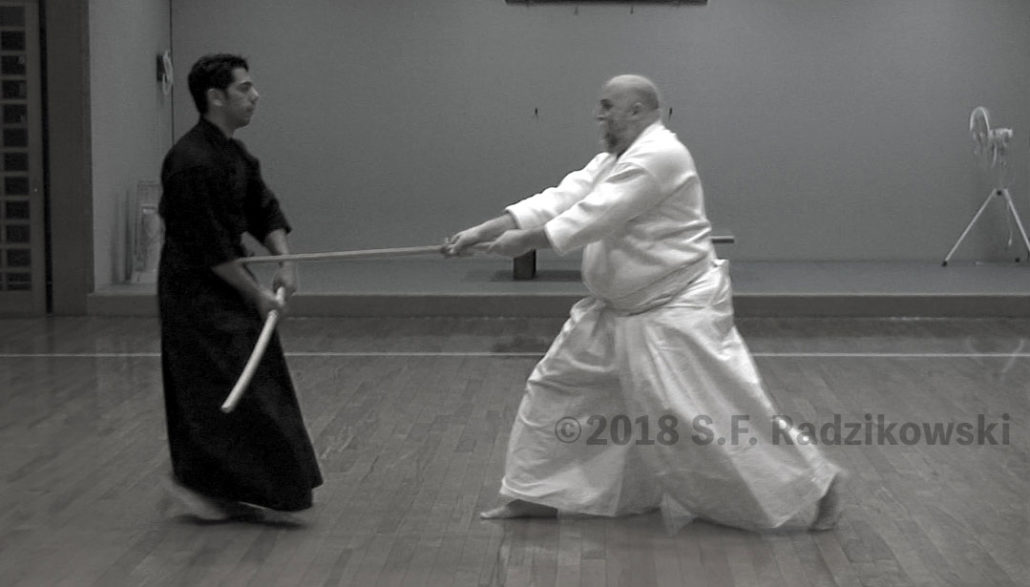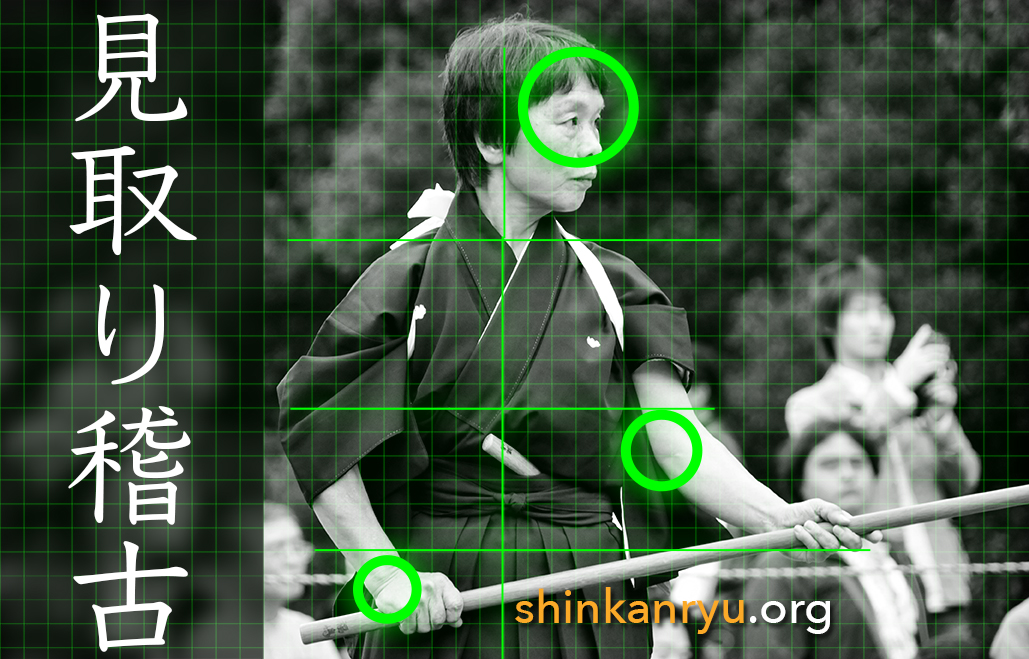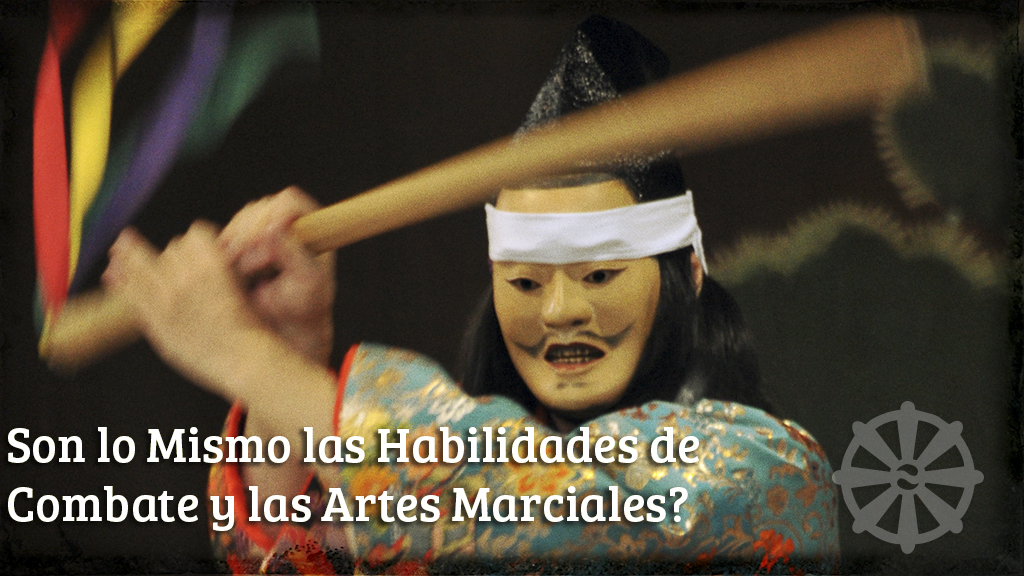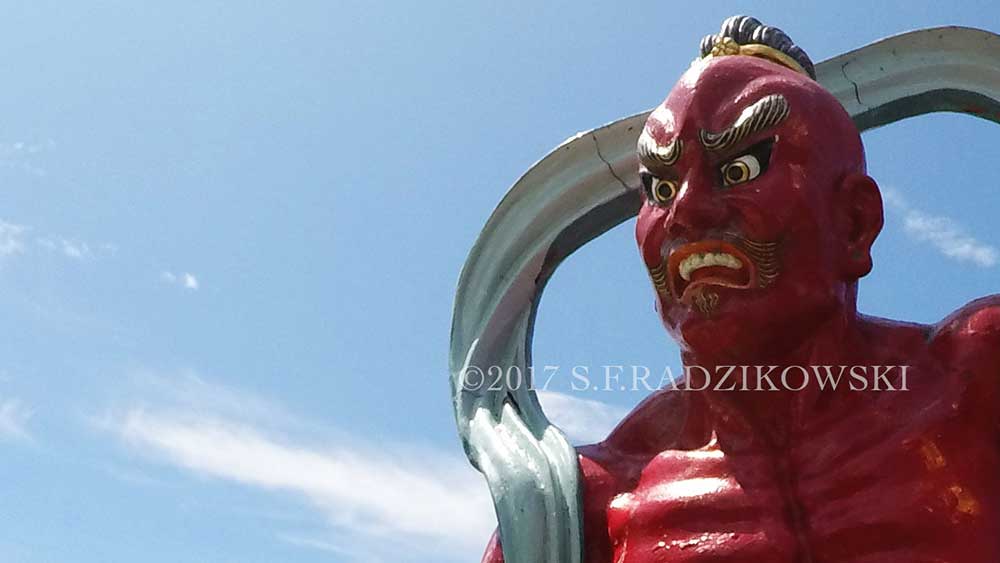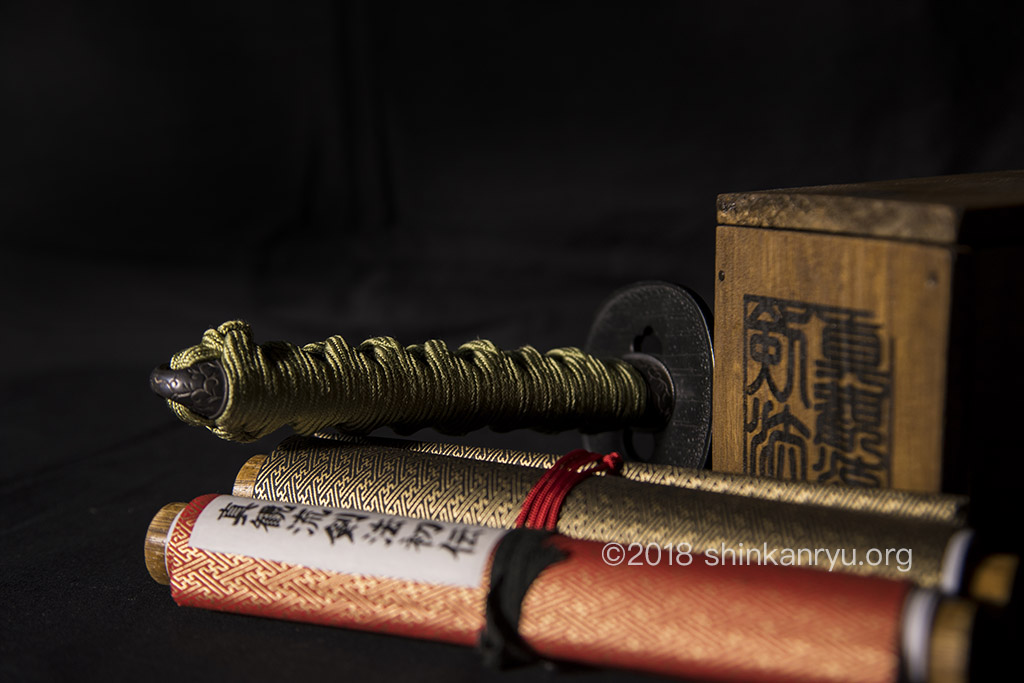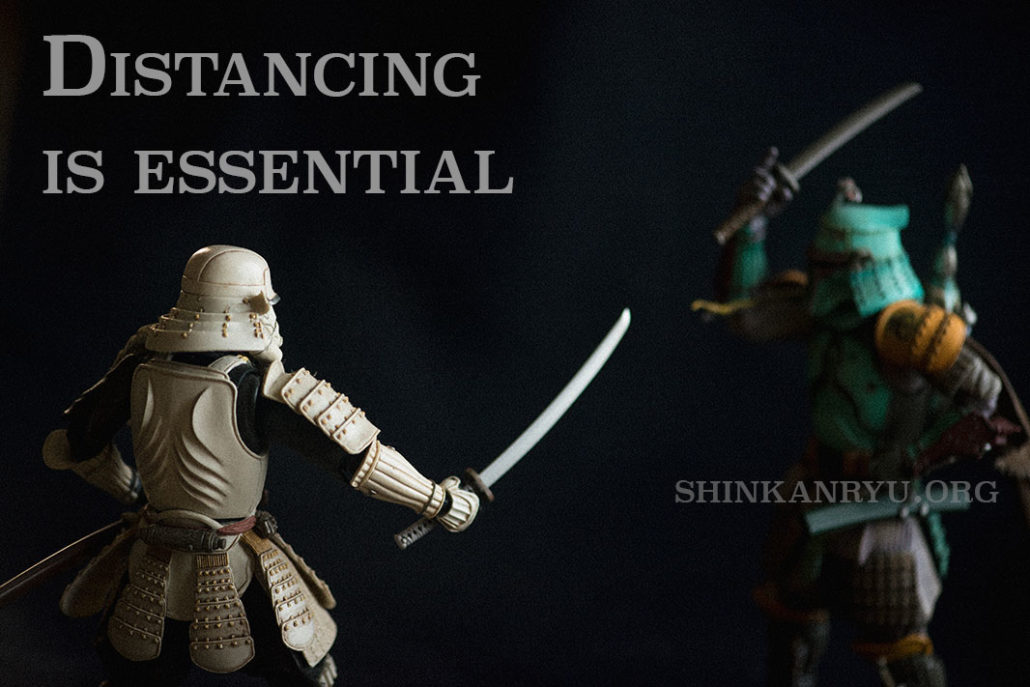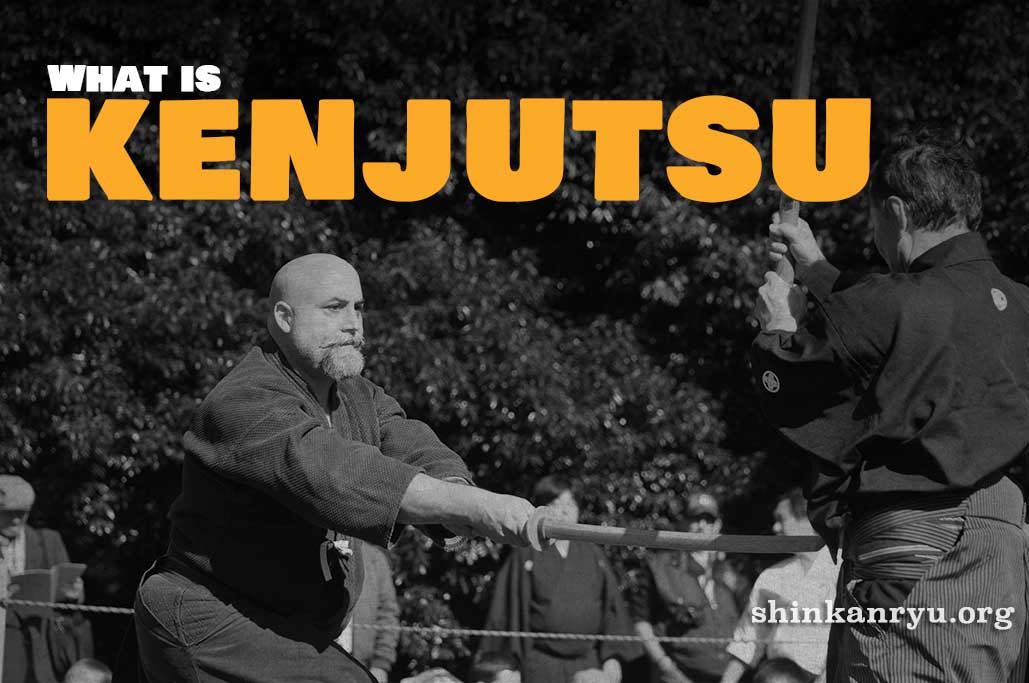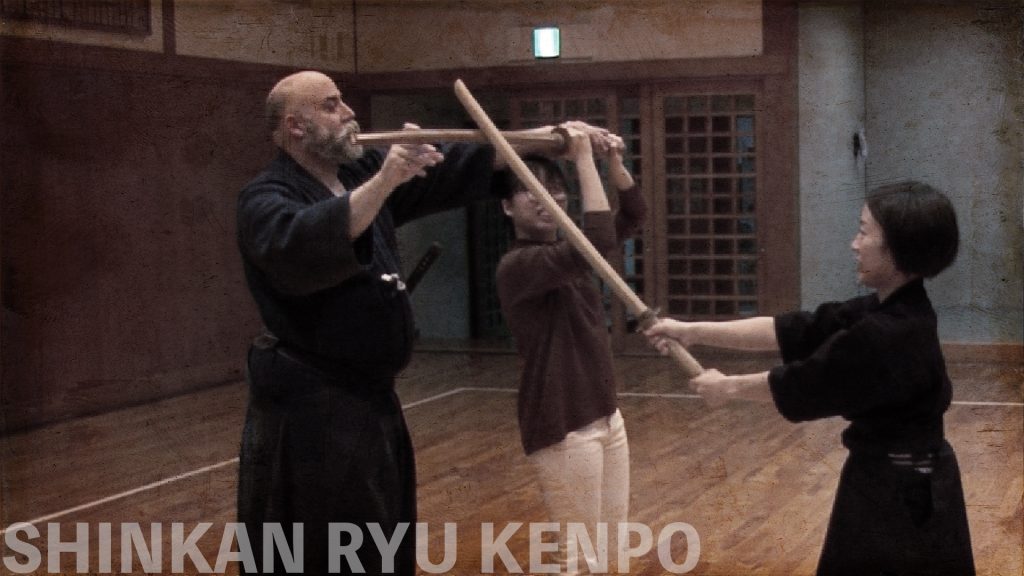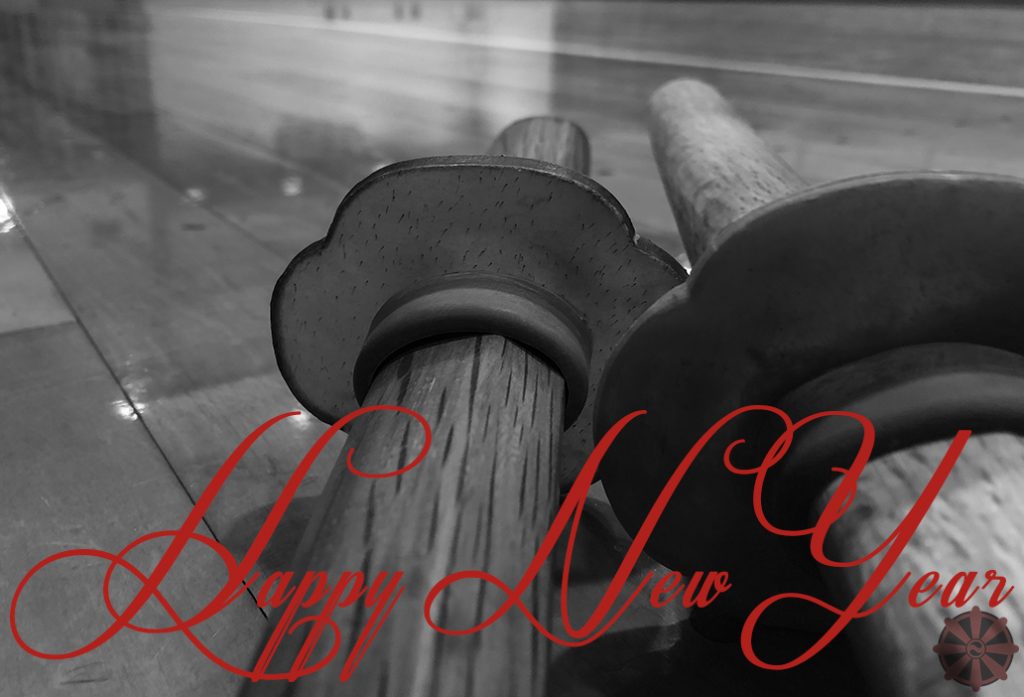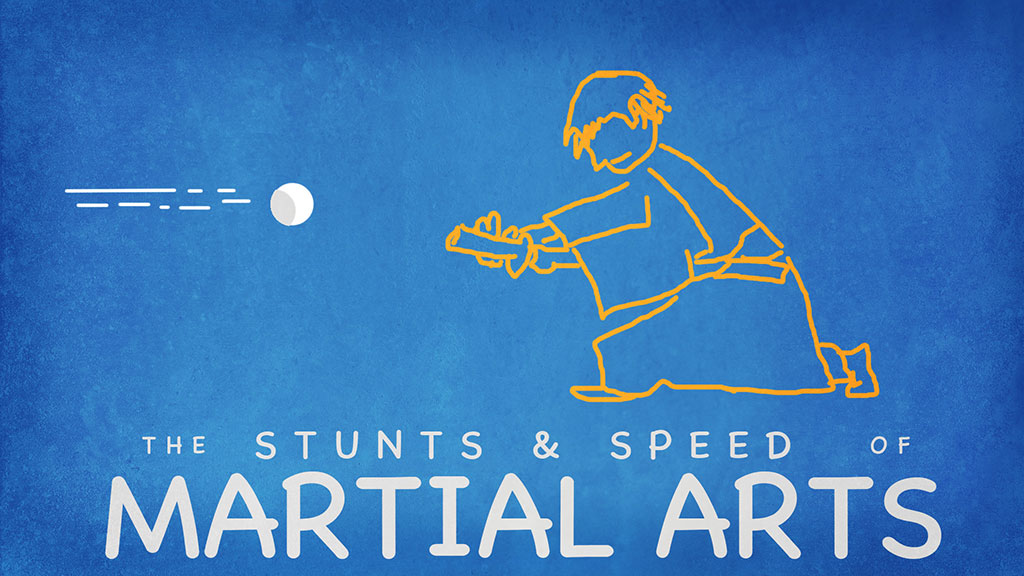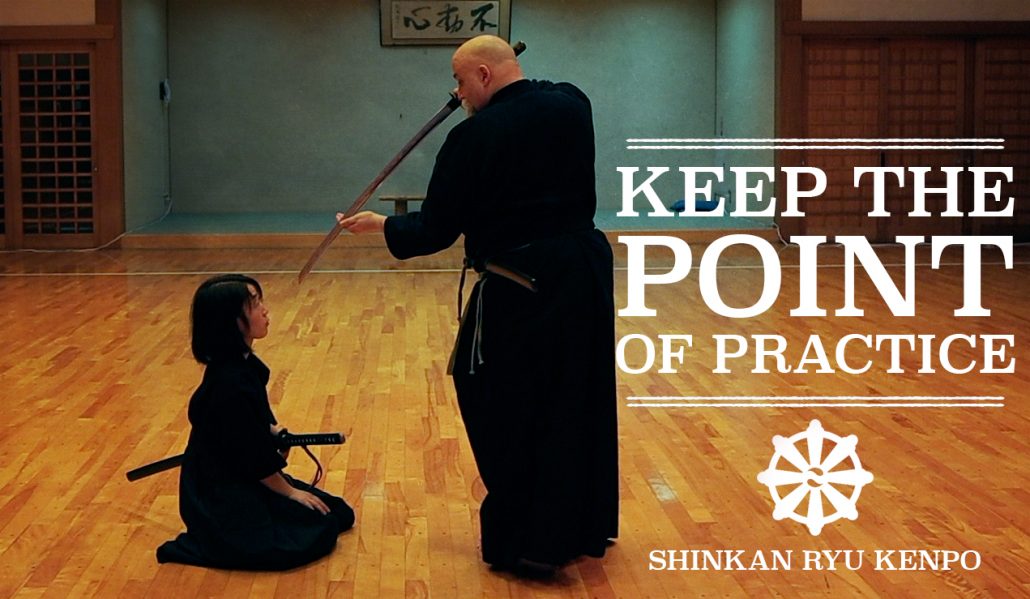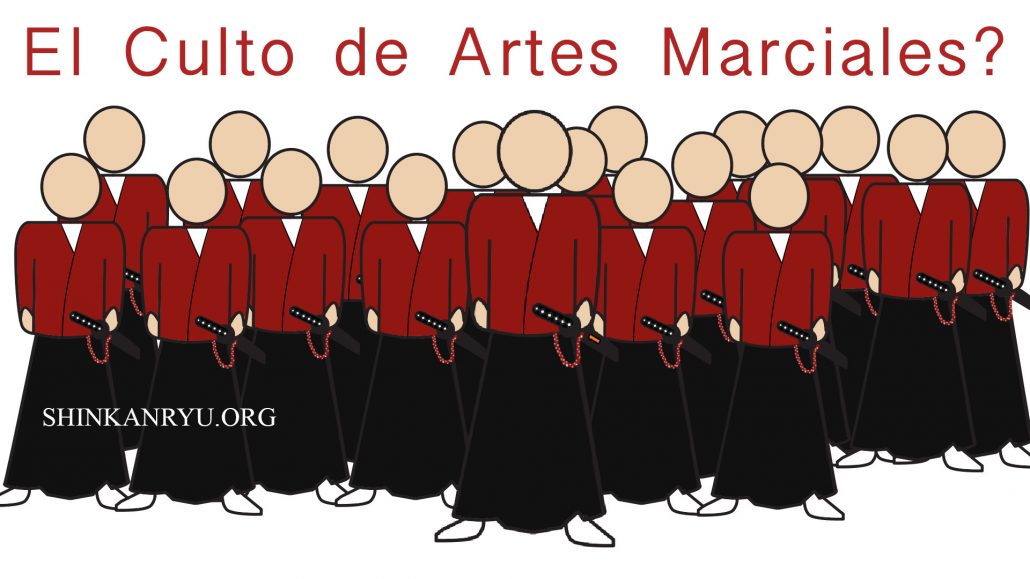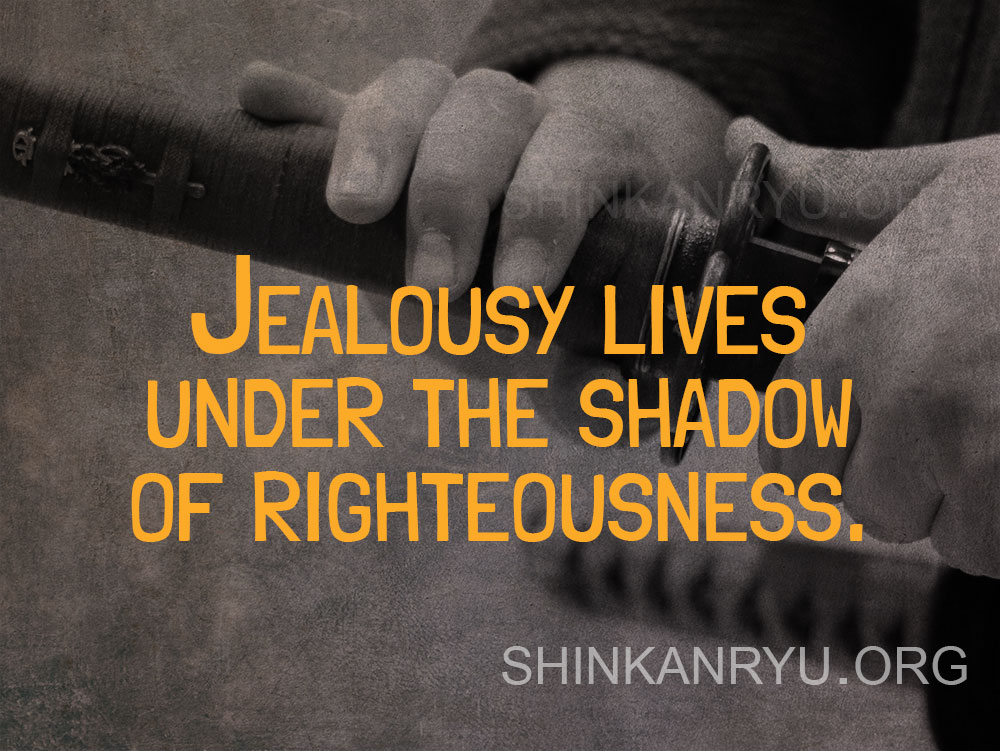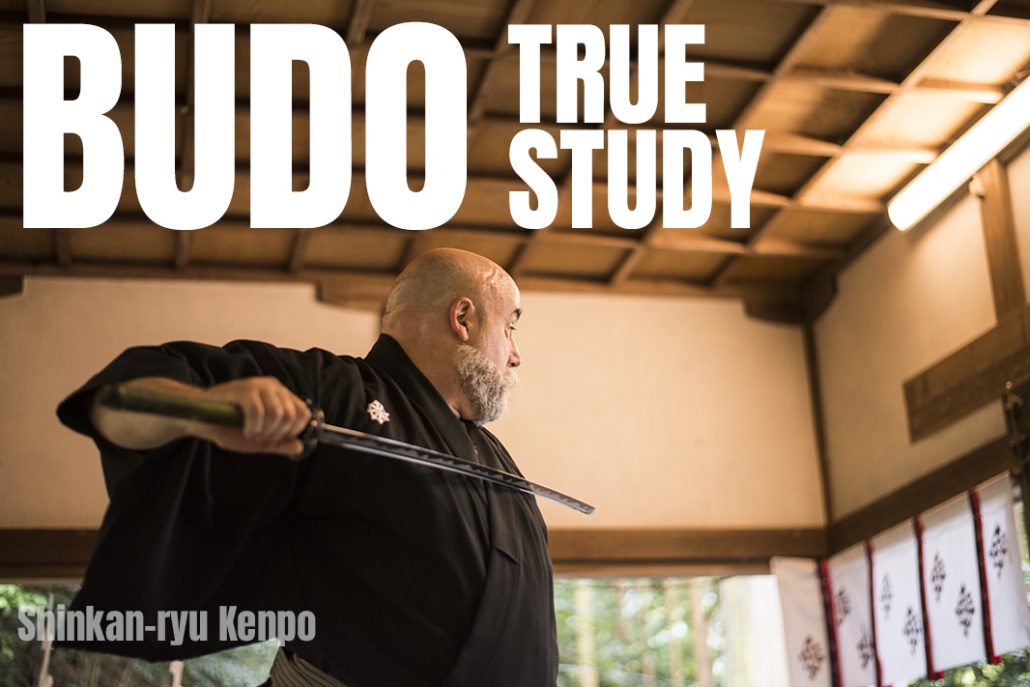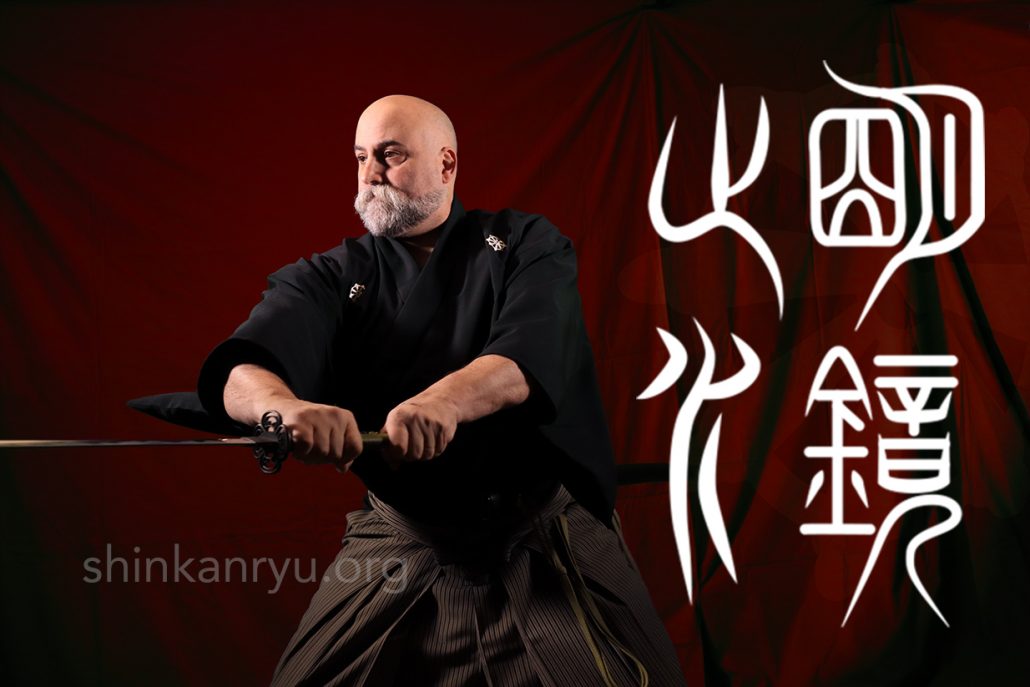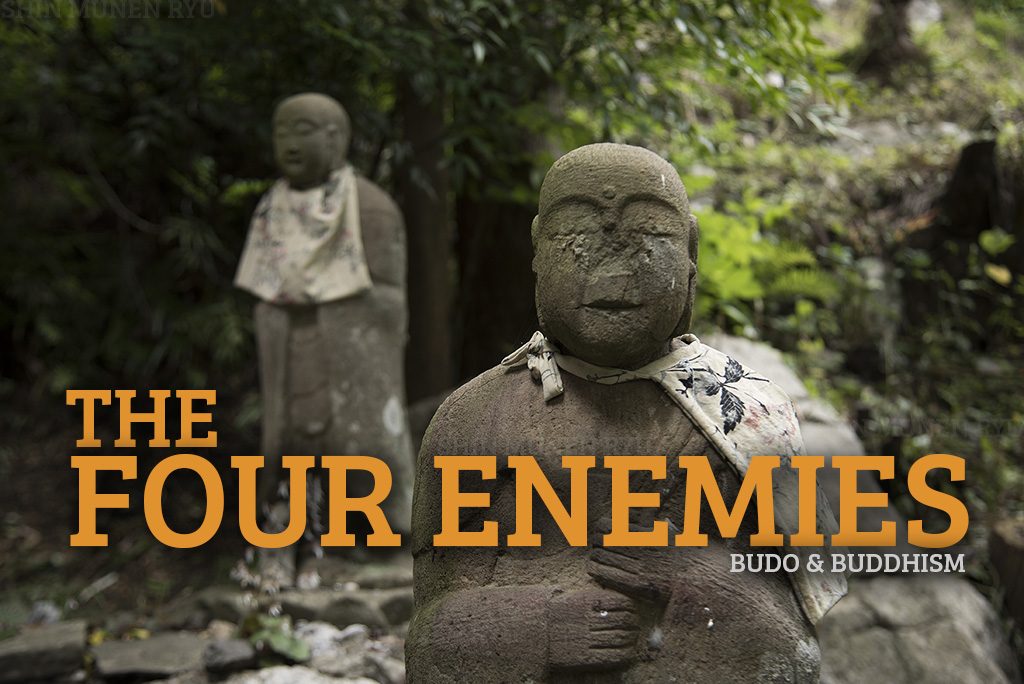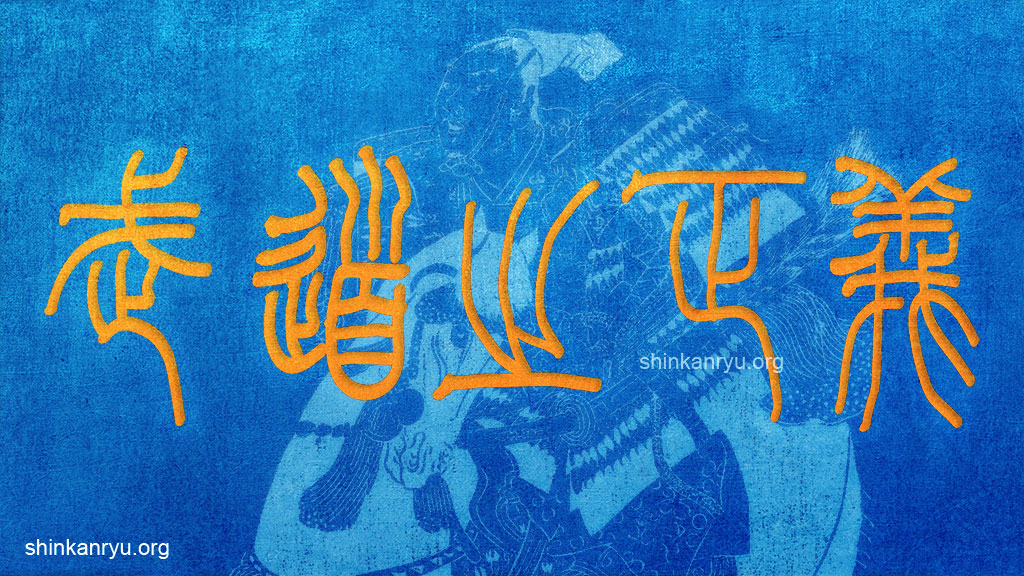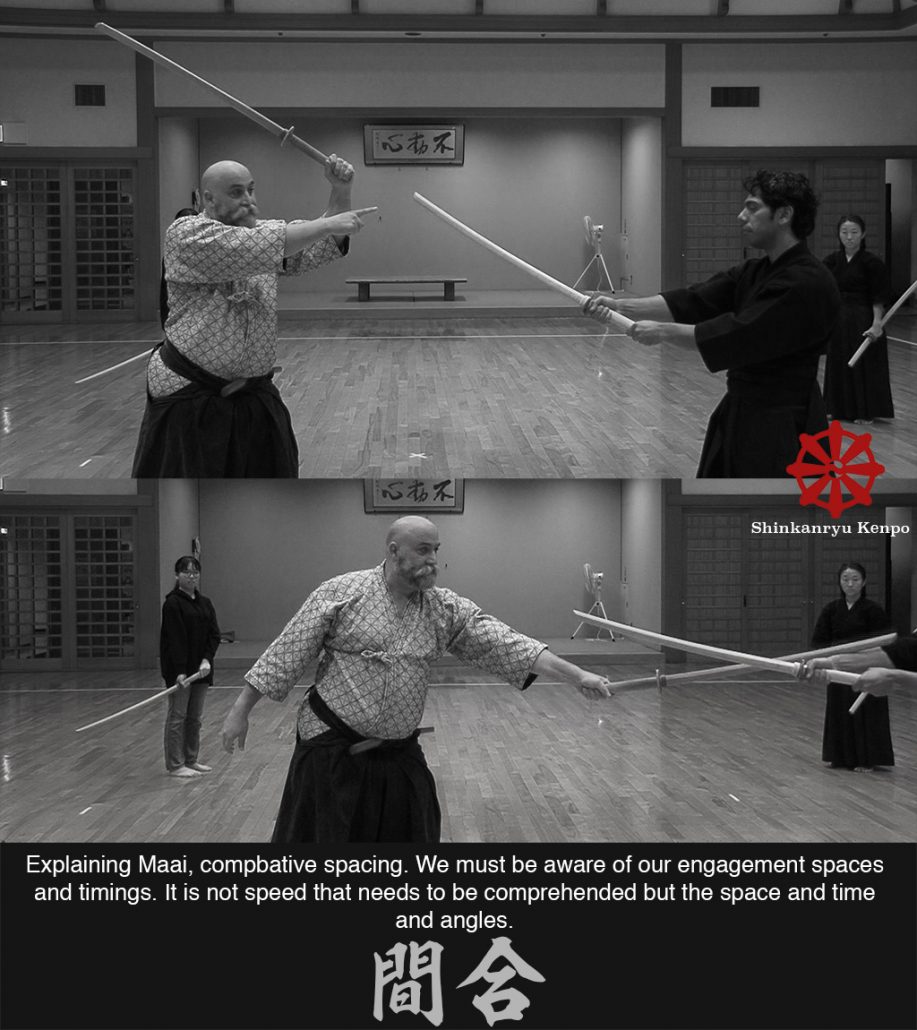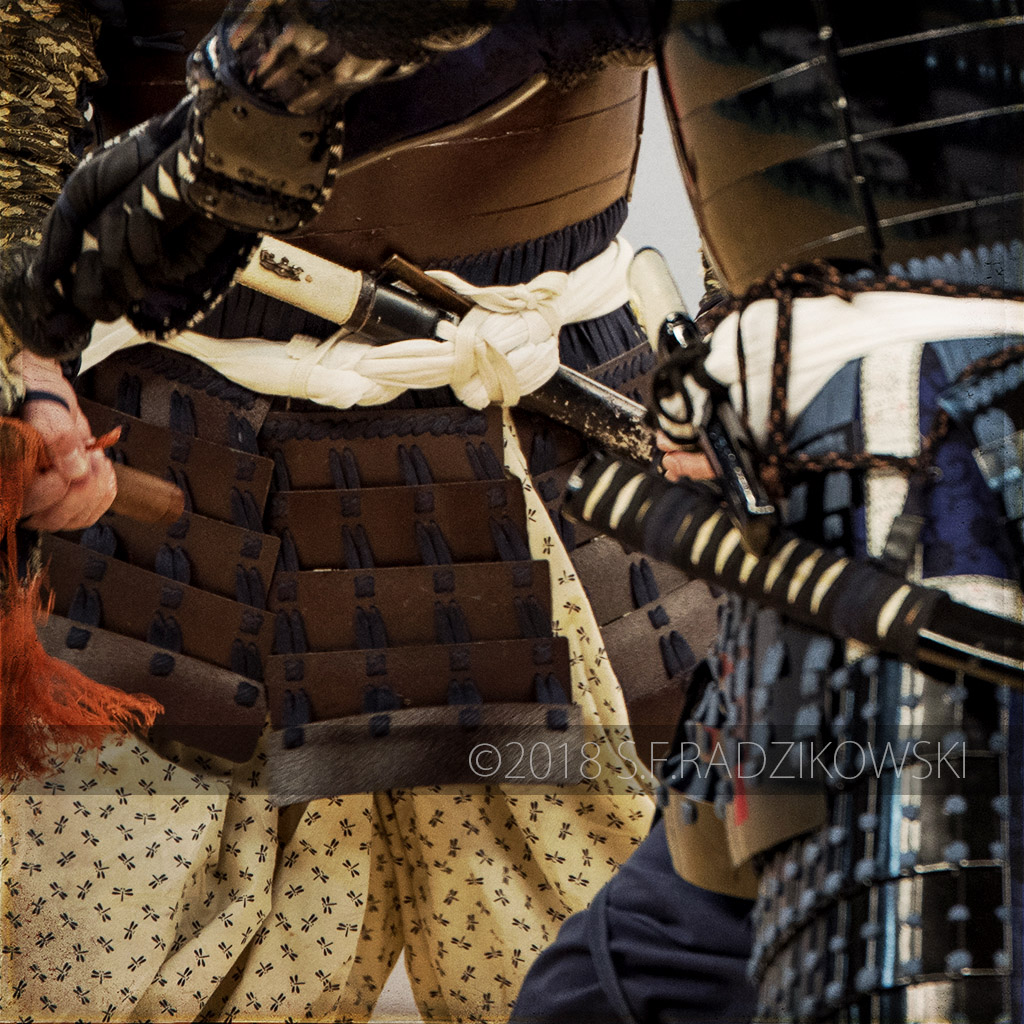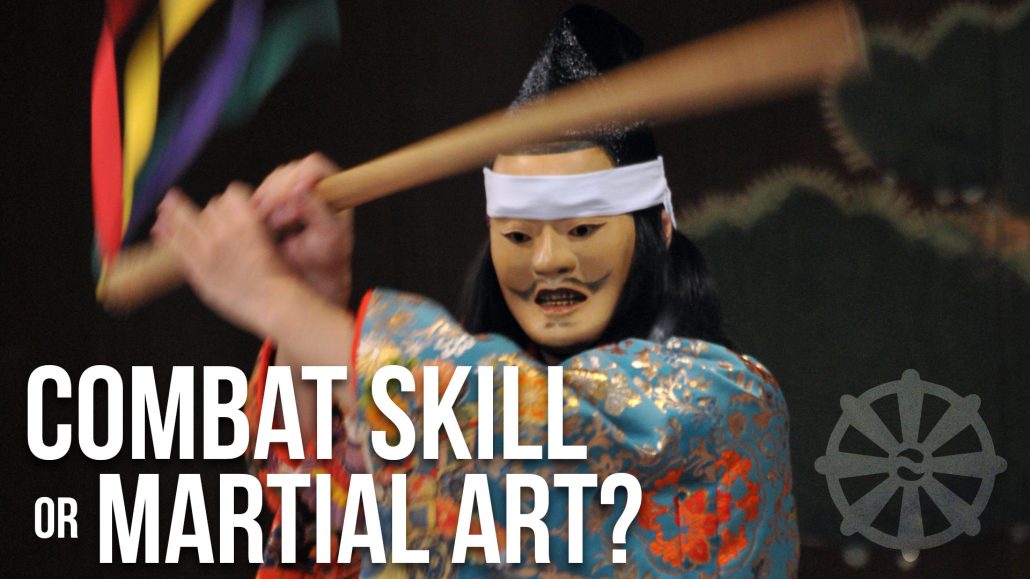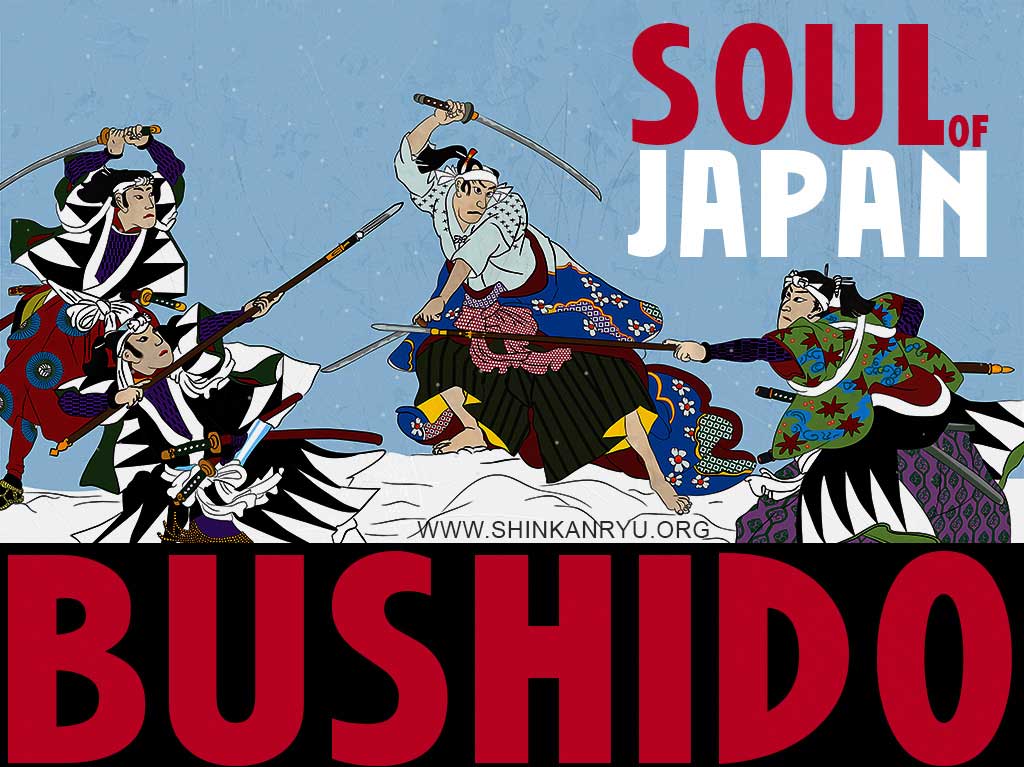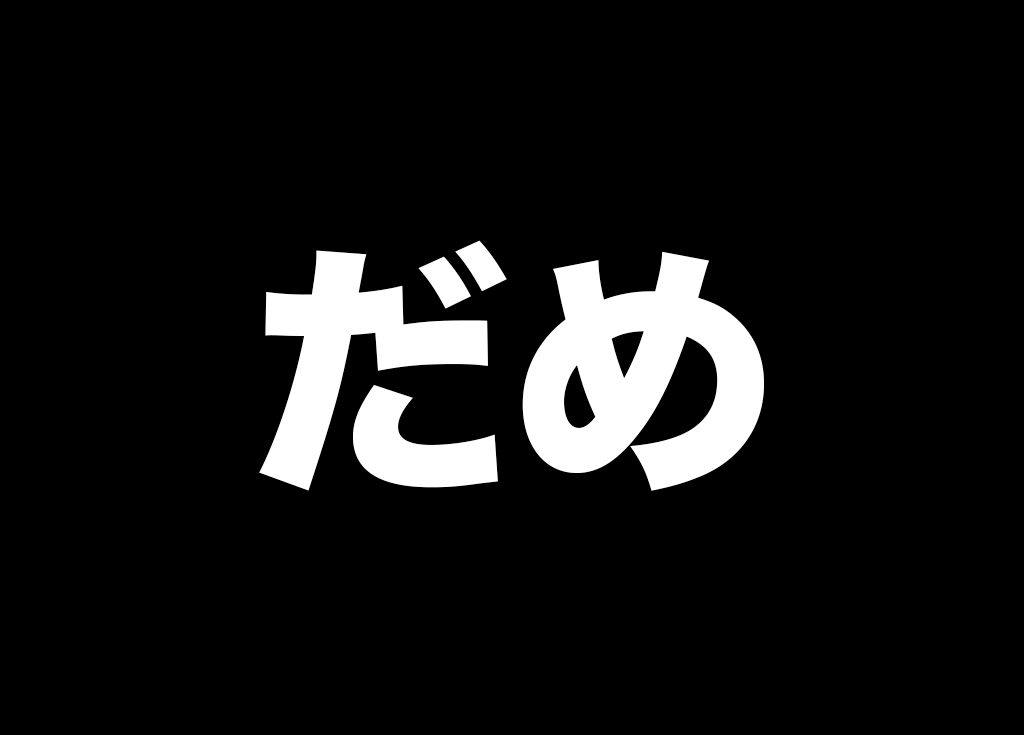Bujutsu Kata
Training in martial arts can be done in different ways. One of the tried and true methods in Japan is the kata 形 (shape) or 型 (model). Combat systems in Japan have used the kata as an instruction tool from at least 1200 AD as a way to train the bushi or samurai among their domains and training camps. Kata in martial arts was developed to train both the mind and body. Psychosomatic training is integral in bujutsu. Kata training is a rehearsed set of movements with a lot of detail and depth contained in them. Kata can be done solo or paired. Although choreographed kata can be greatly modified by small adjustments of timing and distance.
There are many combat-oriented schools from the time of the samurai still extant today. We often refer to these schools as Koryu 古流. Old Styles. Koryu mainly relies on the kata as the teaching method.
What Is Koryū?
I would like to briefly define Koryū as it differs from modern Japanese martial arts in a few ways. We can define it solely by its age. Most agree that styles invented after 1868 fall under the umbrella of modern (Gendai 現代) budo. Everything before 1868 is Koryū.
This is a shallow definition and presents a bit of a problem in identification because some arts before this time frame and after do not exactly fall into the arts that were designed for fighting and taking lives; combative arts (Bugei 武芸).
Another means to categorization is that modern budo places importance in an order of aesthetics, character discipline, and correct morality. The latter being the most important. Bujutsu, on the other hand, places combat effectiveness as its primary ambition with discipline and correct morals falling in second and third. If at all.
The problem here is that some schools founded after 1868 can have the same functions.
What makes Koryū different from modern arts in Japan?
What most classical schools have in common is using paired kata as a teaching method. And it is the reliance of this kata as a training method that helps distinguish the classical Japanese Martial arts from the budo forms it gave birth to. In most modern budo the kata is looked at as a bit of a museum piece. Something not so dynamic and useful for martial training.
However, for the medieval warriors of Japan, and the modern Koryu practitioner the kata was, and is, a very valuable and effective tool in teaching the techniques of a particular style and preparing the mind of the person for combat engagement within a battle or duel.
Kata teaching allows students to learn and understand what is more combat effective. Though some will view this as not true. We should consider that the movements themselves are not always the focus. When we watch a kata performed we tend to lock onto the gross movements and shapes. But what is within this space is the behavior that makes up the actual style. This behavior is what is learned through performing and studying kata. This behavior is the ideal to be understood. Learning kata is a psychosomatic endeavor. The mind, breath, and body need to be cultivated and trained.
The bushi were trained to deal with battle and the lifestyle of a warrior.
We should not separate the warrior from the battle. Even outside of the war-zone there were dangers for the bushi, therefore there was an emphasis on mental, physical and spiritual training.
That death is the way of the samurai is not only that one gets killed, but that one is killing others. Death is impermanence and that is the main issue for a warrior. Nothing remaining the same is a crucial idea in a grand battle or even a duel. This is an important aspect and concerns the spiritual training for bushi. Having this power or ability to kill and knowing when to use it allows the warrior to show compassion or mercy.
These morals are honed by interacting with others in training. Training with others is really the only effective way to gain skill in dealing with attacks.
Modern iaido training while very interesting and in-depth is not always concerned with the important facets of sword combat.
Awareness, timing, and distance are integral aspects of weapon combat. We don't find this in solo practice of which most modern schools are made up of. The kata, of course, contains the training for all three. The opponent with serious intent poses a great danger. Feeling safe does not prepare the person for the mental stress arising from danger in combat.
During my Kendo training, in the beginning, my dojo-mates felt that free practice was more interesting and effective as a learning tool. I thought it was interesting as the free exchanges provided me with an opportunity to increase my skill in understanding maai 間合い and timing (combative distance intervals). My idea was that its a great way to develop better combat skills. I also felt that basics practice, where your partner is doing a prescribed strike and you are countering it in some way, similar to a kata form, was very effective in learning. After studying koryū kenjutsu I realized that the kata standard was actually more effective in learning combat effective styles. The sword was coming much faster and with more speed and power, I also wasn't wearing protective equipment. That feeling that “yeah sure I will get hit but it's ok.”, wasn't there anymore. No more false security. Now if I made a mistake I was in for a moderate to serious injury. In fact in many cases that serious injury can be death. I believe the combative mindset is much stronger within kata than in free practice. Within the kata, there is a multitude of chances to increase danger and stress. The choreographed nature also allows breathing room for the student to contemplate more deeply about many aspects of the technique.
Kata might be pre-arranged but it is not always predictable.
Technological Advances
Widespread use of protective equipment was also not sought out and used until much later in bujutsu history. Weapons such as the fukuro shinai were in use around the 16th century. As well Maniwa Nen-ryū was using protective headgear around the 17th century. Widespread use of ‘sparring armor’ become more popular as the fighting classes had no more wars, and there was now a way to have matches without risk of death and serious injury. This is the birth of a martial sport that we know of today as Kendo. Towards the end of the 18th century, many schools incorporated fighting with protective equipment into their curriculum. These schools had much higher enrollments than schools centered on the age-old tradition of kata based teaching.
The thrill of fencing is something that pervades the world of martial arts even today. Kendo, and Judo have far higher enrollments than classical arts of Kenjutsu and Jujutsu.
This is of course not the only reason. But it is a large enough reason not to dismiss it.
Kata is often looked at as static and impotent, however, training with knowledgeable people kata practice is extremely intense and pragmatic and effective in training someone in the arts of classical Japanese warfare. This practice is not solely tied to the age of the Samurai. The modern military also uses kata in combat classes as well. Kata can be viewed with a dismissive attitude, but as most things are a bit old we should look keenly at it and understand it deeply before throwing it out as a useless artifact from the past.

ラジカスキー真照
館長Saneteru Radzikowski is the head sword instructor of Shinkan-ryū Kenpō. He lives and teaches Iaijutsu and Kenjutsu from Nara, Japan.
Mitorigeiko Special Practice
Present and switched on The method of critically watching practice is commonly referred to as...
Son lo Mismo las Habilidades de Combate y las Artes Marciales?
Porqué hacer la diferencia entre arte marcial y habilidad de combate? Pienso que las habilidades...
Too Many Martial Arts
The koryū of Japan are not self-defense arts. Although they can be authentic and certainly...
Budo Thoughts
There are techniques and scrolls and teachings all over the dojo. What does it matter...
Covid-19 Corona Virus And Martial Arts
What is Kenjutsu? A guide to Japanese swordsmanship
Kenjutsu (剣術) is the Japanese art of the sword. It is one of the four...
Cómo aprender Kenjutsu?
Aprender cualquier cosa tan profunda como un arte marcial requiere de un maestro. El kenjutsu,...
Happy New Year
From all of us at Shinkan-ryū Kenpō to you, Have a wonderful New Year Celebration....
Speed, Martial Arts and Samurai Theater
What’s the difference between bugei 武芸 (martial arts) demonstrations and stunts? People are awed by...
The Point of Iaido & Tame
Pardon the pun, but the point of iaido is important to keep. When we practice...
Estás Involucrado en un Culto de Artes Marciales?
Recientemente tuve una conversación con alguien que se refirió a su escuela como una genuina...
Jealous Martial Artists
Martial artists should be aware of what can live in the shadow of righteousness; jealousy...
True Budo Proper Conduct
True budo, real budo, is about being your authentic and true self. Those of us...
A Very Budo Christmas Happy Holidays & New Year
Happy Holidays and Happy New Year to all of you that were kind and supported...
正月 Bujutsu New Years 2019
To all of you that have supported and also those that have caused trouble to...
Four Enemies
Four Friends. Four Enemies. One morning while on alms rounds the Buddha gave a heap...
Code of Bushido Righteous Heart
Being righteous and doing the right thing is one of the foundations of body and...
Maai; Combative Space-timing
Teaching maai 間合い, the ideas of combative spacing and timing intervals in kenjutsu.
Martial Arts Creator Origin Myths of Japan
Japanese Koryū Creator myths; becoming enlightened and making up a whole martial arts system. Some...
Are Combat Skill, Self Defense & Martial Art The Same?
Why make the distinction between martial art and combat skill? I believe that combat skills...
Bushido: The Soul of Japan
The code of the samurai is always popping up in martial arts circles and popular...
Budo Don’t
Don’t be in love with your weapon. Don’t be in love with your uniform. Don’t...
©2018 S. F. Radzikowski


